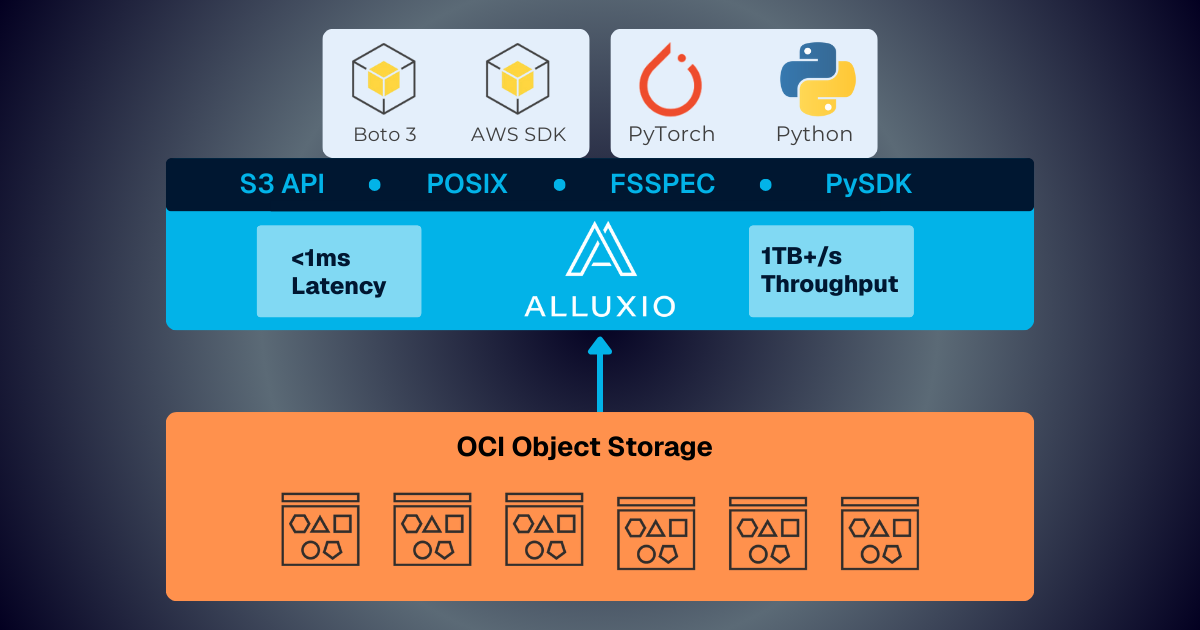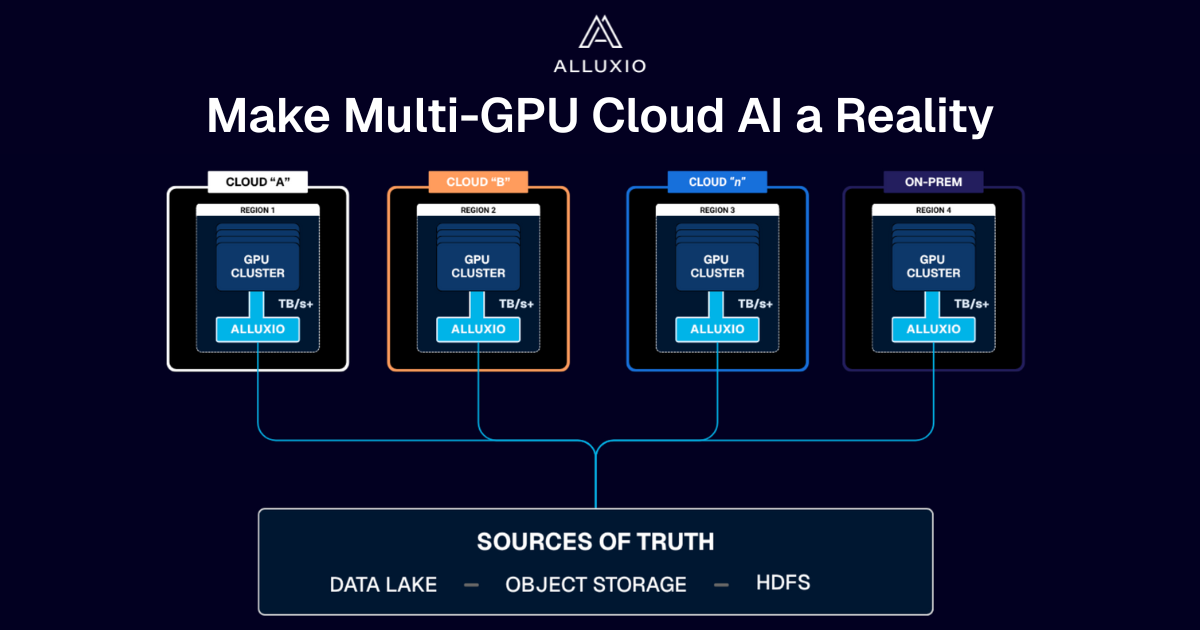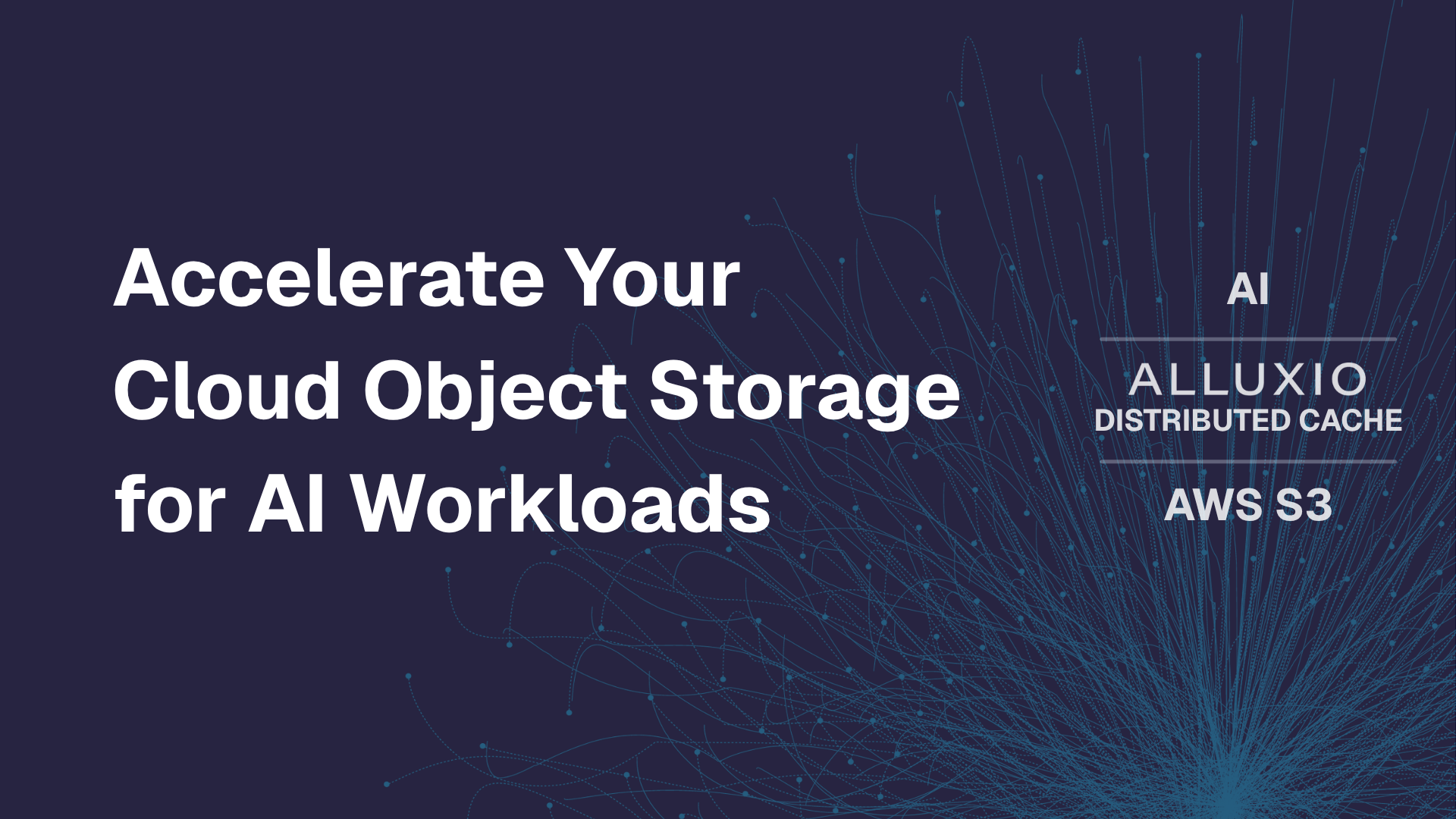Products
Blog

Alluxio and Oracle Cloud Infrastructure: Delivering Sub-Millisecond Latency for AI Workloads
Oracle Cloud Infrastructure has published a technical solution blog demonstrating how Alluxio on Oracle Cloud Infrastructure (OCI) delivers exceptional performance for AI and machine learning workloads, achieving sub-millisecond average latency, near-linear scalability, and over 90% GPU utilization across 350 accelerators.

Make Multi-GPU Cloud AI a Reality
If you’re building large-scale AI, you’re already multi-cloud by choice (to avoid lock-in) or by necessity (to access scarce GPU capacity). Teams frequently chase capacity bursts, “we need 1,000 GPUs for eight weeks,” across whichever regions or providers can deliver. What slows you down isn’t GPUs, it’s data. Simply accessing the data needed to train, deploy, and serve AI models at the speed and scale required – wherever AI workloads and GPUs are deployed – is in fact not simple at all. In this article, learn how Alluxio brings Simplicity, Speed, and Scale to Multi-GPU Cloud deployments.
.png)
Thank you! Your submission has been received!
Oops! Something went wrong while submitting the form.

What's New in Alluxio Enterprise 2.10: Radically Resource-efficient for Improved Speed at Lower Cost
Cloud Cost Savings
Large Scale Analytics Acceleration
Model Training Acceleration
.jpeg)
Building High-performance Data Access Layer for Model Training and Model Serving for LLM
Bringing a large language model from its initial training to deployment requires numerous systems and components. At Zhihu, we grappled with a multi-cloud, cross-region AI platform, requiring an efficient solution to facilitate the rapid training and delivery of models for production use cases. This led us to adopt Alluxio, the high-performance data access layer for LLM. This blog provides an in-depth look at Zhihu’s challenges, journey, and solution for LLM training and deployment. Through adopting Alluxio, we’ve significantly enhanced model training performance by 2 to 3 times and can deploy updated models every minute instead of hours or days. Also, our GPU utilization has doubled, infrastructure and operation costs have been halved, and we have established a resilient, efficient infrastructure capable of meeting our escalating AI demands.
Model Training Acceleration
Model Distribution
GPU Acceleration
Cloud Cost Savings
.jpeg)
Cross Cluster Synchronization in Alluxio: Part 2 - Mechanism
This is part 2 of the blog series talking about the design and implementation of the Cross Cluster Synchronization mechanism in Alluxio. In the previous blog, we discussed the scenario, background and how metadata sync is done with a single Alluxio cluster. This blog will describe how metadata sync is built upon to provide metadata consistency in a multi-cluster scenario.
No items found.

Cross Cluster Synchronization in Alluxio: Part 1 - Scenarios and Background
This is a blog series talking about the design and implementation of the Cross Cluster Synchronization mechanism in Alluxio. This mechanism ensures that the metadata is consistent when running multiple Alluxio clusters. Part 1 of this blog series discusses the scenario and background.
No items found.
Your selections don't match any items.


.jpeg)
.jpeg)
.jpeg)

.jpeg)